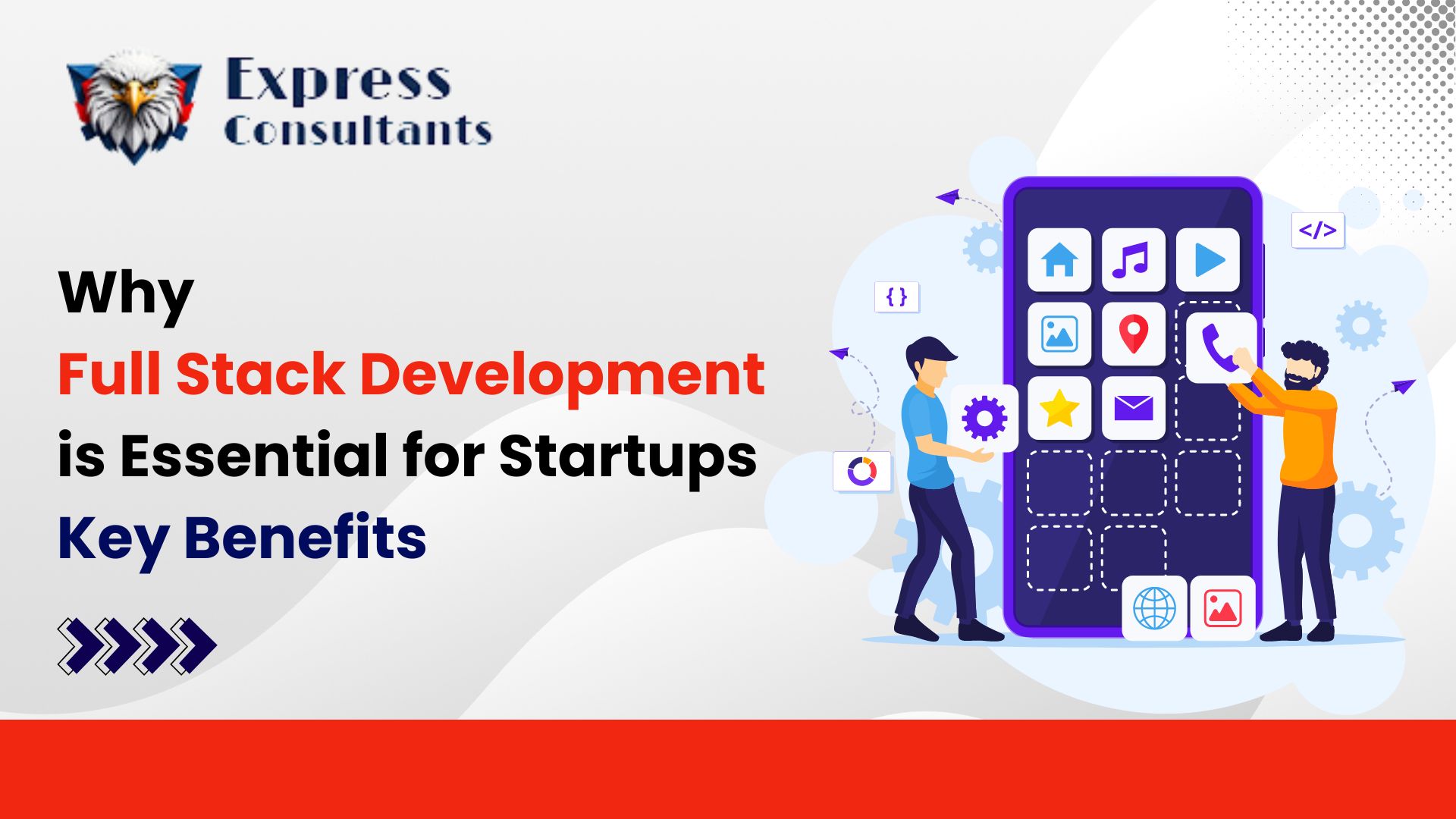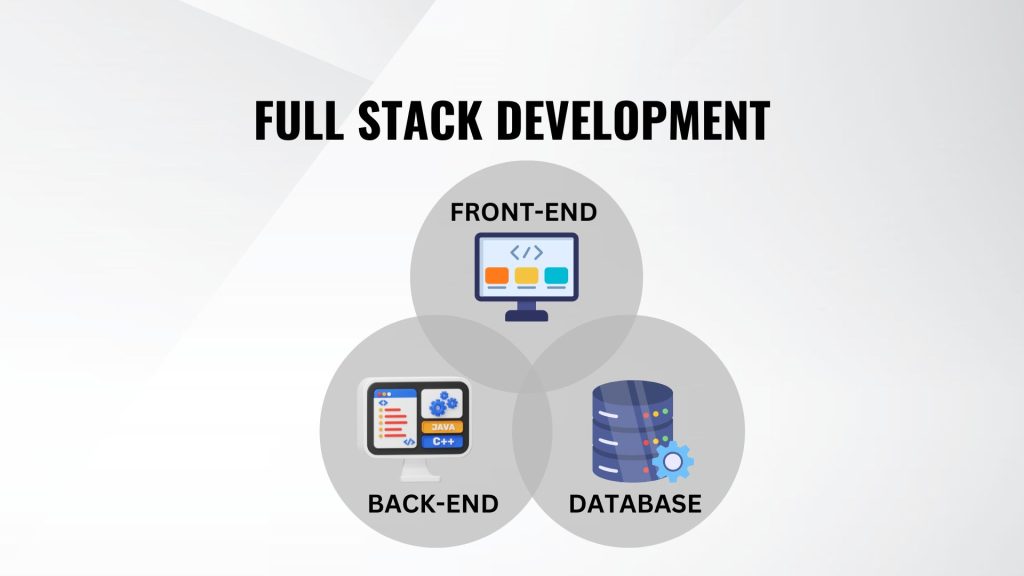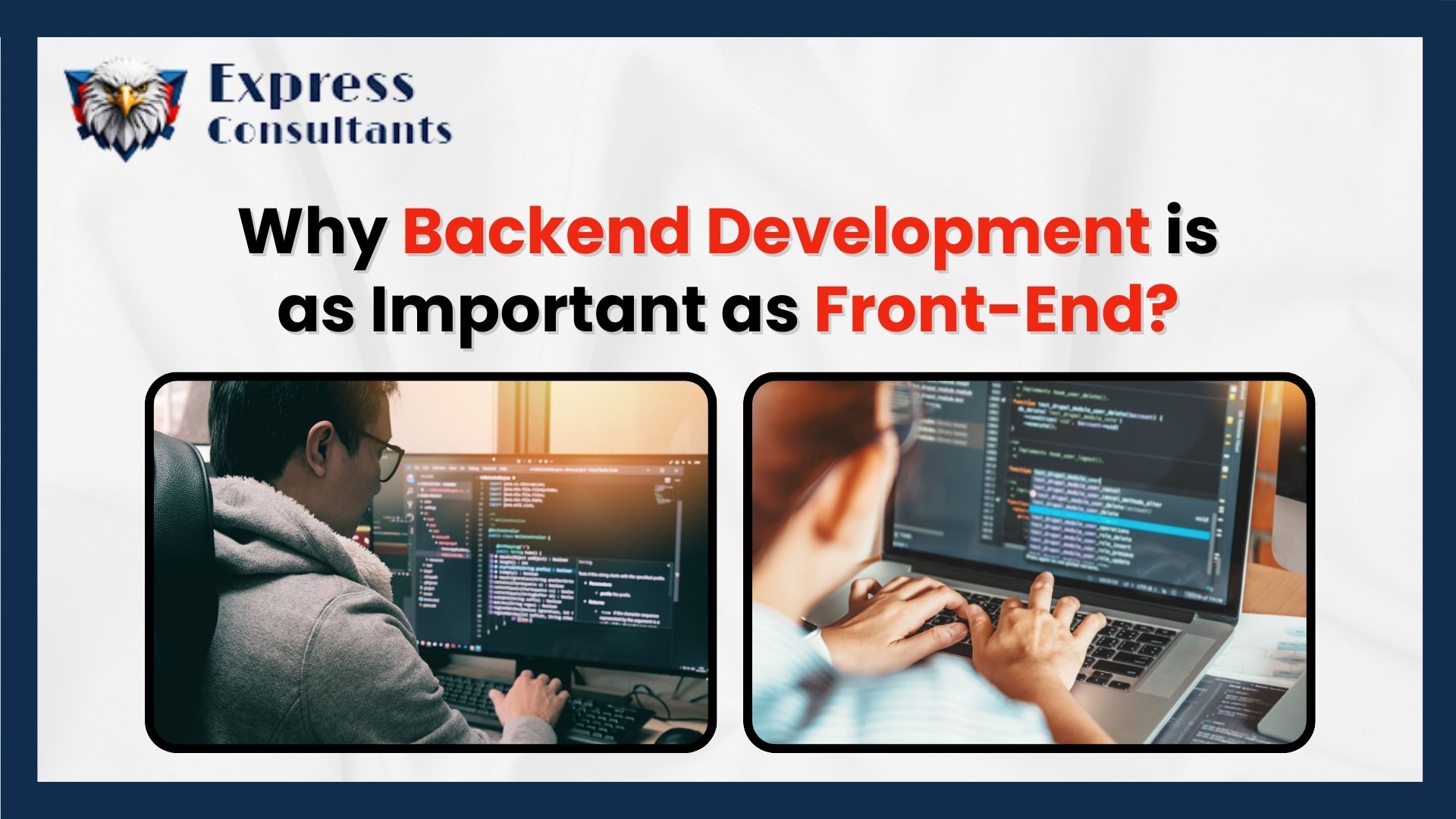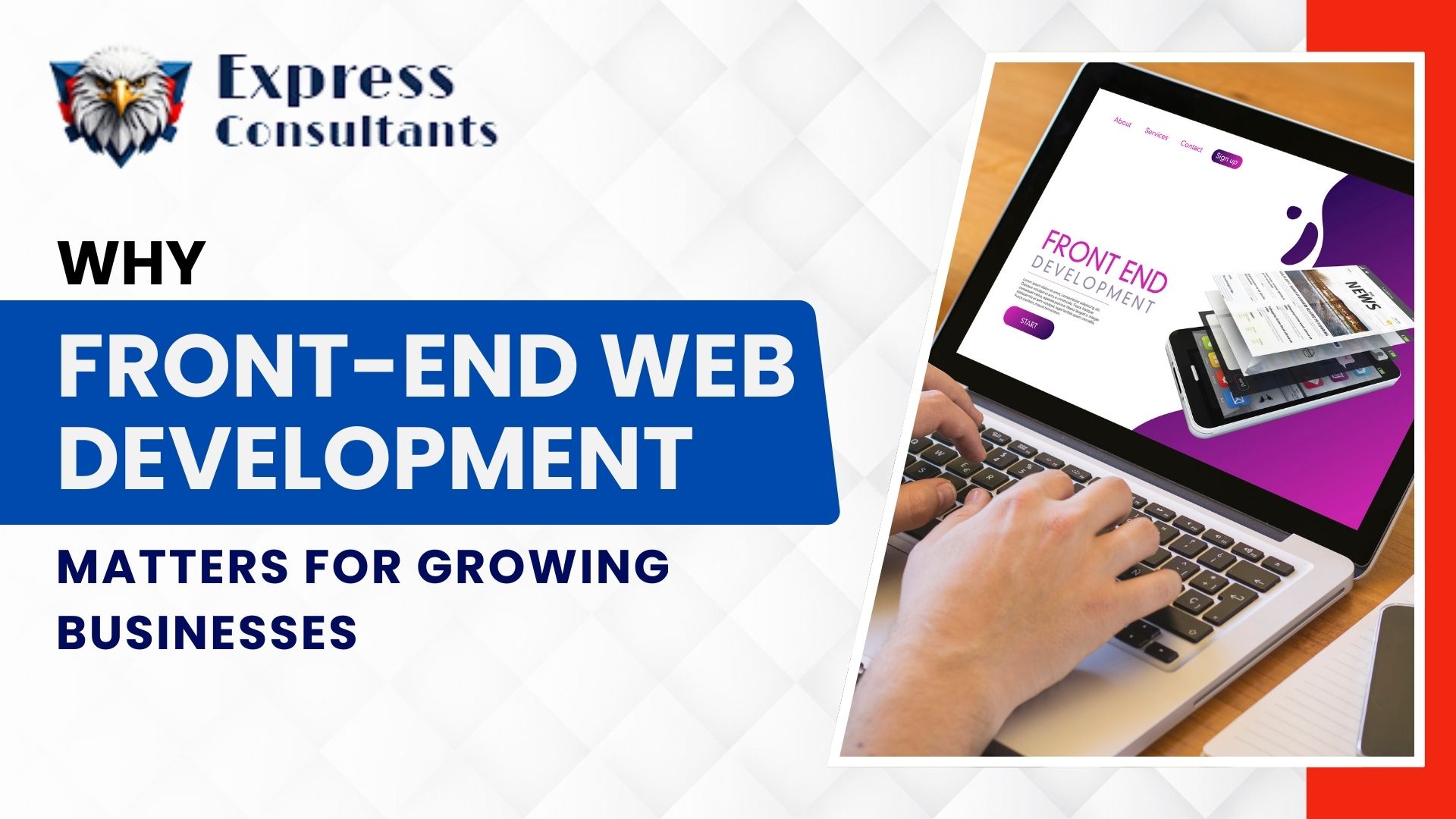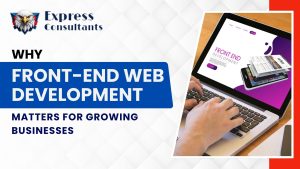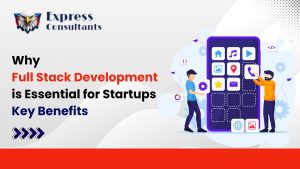
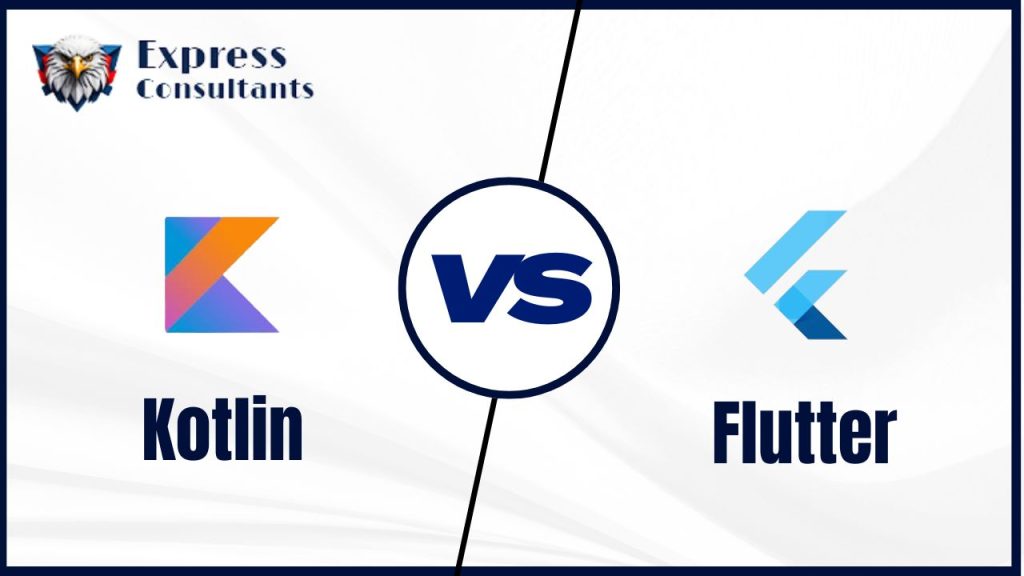
Kotlin vs Flutter: Which One is Better in 2024?
Kotlin vs Flutter: Which One is Better in 2024?
“Did you know that Kotlin’s popularity skyrocketed by 80% among Android developers in the last five years?”—That’s right, this powerful language, introduced by JetBrains, has taken the development world by storm. And then there’s Flutter, Google’s ambitious toolkit that allows you to create beautiful native apps on a single codebase. With these two giants, the question on everyone’s mind is: Which one is better in 2024? Let’s dive deep into Kotlin vs Flutter, breaking down the differences, strengths, and scenarios where each one truly shines.
What is Kotlin and Why Do We Use It?
Kotlin is a modern programming language developed by JetBrains, the same folks behind IntelliJ IDEA. It runs on the Java Virtual Machine (JVM), making it compatible with Java code. Over the years, Kotlin has evolved from just being a “better Java” to being the official language for Android development. It’s concise, null-safe (bye-bye NullPointerExceptions!), and has a robust set of tools.
But why do we use Kotlin? Simple—it’s powerful yet easy to learn. Kotlin allows developers to write cleaner, more maintainable code. It reduces boilerplate code significantly. In the Android world, Kotlin is like that cool new tool that just works and makes life easier. Android Studio fully supports it, and Google recommends it as the language of choice for Android apps. Plus, Kotlin isn’t just confined to Android. You can use it for backend development, cross-platform apps, and even web development.
Pros and Cons of Kotlin
Let’s talk Kotlin. This language isn’t all rainbows and sunshine—although it’s pretty close.
Pros:
- Interoperability with Java: One of Kotlin’s biggest strengths is that it’s 100% interoperable with Java. You don’t have to start from scratch when switching to Kotlin—you can use your existing Java codebase.
- Conciseness: Kotlin cuts out unnecessary boilerplate code, so you can do more with fewer lines. It’s great for those who hate repetition.
- Null Safety: Kotlin has built-in null safety. This means fewer runtime crashes due to null pointers, a feature that Java developers often envy.
- Coroutines: With Kotlin, asynchronous programming is made easy through Coroutines, which simplifies threading tasks. This makes building complex apps a breeze.
Cons:
- Learning Curve: Even though Kotlin is touted as an easy-to-learn language, it’s still more complex than Java for complete beginners. Some developers struggle with its unique syntax and functional programming elements.
- Compilation Speed: While Kotlin’s code is more concise, its compilation times can be slower compared to Java, especially for large projects. It’s improving, but it’s something to consider.
- Smaller Community: Although Kotlin is growing fast, it still doesn’t have as large a community as Java or Flutter. This means fewer libraries, fewer resources, and sometimes, less support.
What is Flutter and Why Do We Use It?
Now, Flutter is a different beast. Created by Google, it’s a complete UI toolkit designed to build apps for Android, iOS, the web, and even desktop—all from a single codebase. Flutter doesn’t just help you create apps, it lets you build beautiful, natively compiled applications. The secret? Its Dart programming language, which compiles to native ARM code, making it incredibly fast.
So, why do we use Flutter? Because it’s efficient, cross-platform, and has the power to deliver smooth animations and a modern user experience. For startups and businesses with tight deadlines, Flutter allows you to create feature-rich apps with a shorter time-to-market. If you’re thinking about creating an app without worrying about platform-specific codebases, Flutter is your go-to. Plus, it has a massive community, Google backing, and support for Material Design and Cupertino, making it a favorite among UI/UX designers.
Pros and Cons of Flutter
Now, Flutter isn’t without its quirks. While it seems like the shiny tool for cross-platform development, it’s got its pros and cons too.
Pros:
- Single Codebase for Multiple Platforms: Flutter allows you to write code once and deploy it across Android, iOS, web, and desktop. This drastically reduces development time and costs.
- Fast Development: Flutter’s hot reload feature makes the development process much faster. You can see changes in real-time without restarting the whole app.
- Great UI/UX Capabilities: Flutter’s custom widgets are a dream for designers. Whether it’s Material Design or Cupertino (iOS-style), Flutter delivers pixel-perfect interfaces.
- Strong Community Support: With Google behind it and a large, active community, Flutter is continuously evolving, bringing in new features and fixing bugs quickly.
Cons:
Limited Access to Native APIs: While Flutter covers most APIs, there are still certain platform-specific features where it struggles. You may need to write native code to get some functionalities working seamlessly on iOS or Android.
Large App Sizes: One drawback of Flutter is the large size of compiled apps. This could be a problem for users with limited storage, especially on mobile devices.
Dart Language: Although Flutter is fantastic, not everyone loves Dart. It’s a lesser-known language compared to Kotlin or Java, and developers might need time to adapt.
Flutter vs Kotlin Comparison
When we compare Kotlin vs Flutter, it’s important to remember that they’re built for different use cases. Kotlin is more focused on Android development and can handle native app performance exceptionally well. Flutter, on the other hand, is a cross-platform solution, designed to build apps that work on multiple platforms with minimal effort.
| Flutter vs Kotlin Comparison | ||
| Feature | Kotlin | Flutter |
| Platform | Native Android | Cross-Platform (iOS, Android, Web, Desktop) |
| Language | Kotlin (JVM-based, interoperable with Java) | Dart (compiled to native code) |
| Use Case | Android development, backend services | Cross-platform app development |
| Performance | Best for Android native performance | Near-native performance across platforms |
| UI/UX | Follows Android UI guidelines | Custom widgets for both Material and Cupertino design |
| Community Support | Growing but smaller than Java | Strong and backed by Google |
| Development Speed | Moderate (depends on familiarity with Java) | Fast, thanks to Hot Reload |
| Learning Curve | Easy for Java developers, but some complexity | Requires learning Dart, less known than Kotlin |
| App Size | Smaller native app sizes | Larger app sizes compared to Kotlin |
| Tooling | Fully integrated with Android Studio | Uses its own IDE (Flutter SDK with Visual Studio Code or Android Studio) |
When to Use Kotlin?
- Native Android Development: If you’re building an Android app that requires the best possible performance, Kotlin is the way to go.
- Interoperability with Java: When you have an existing Java codebase or need to integrate Java libraries, Kotlin offers smooth interoperability.
- Backend Development: Kotlin can also be used for backend services, especially with frameworks like Ktor.
When to Use Flutter?
- Cross-Platform Development: If your goal is to build apps for both Android and iOS, Flutter allows you to write a single codebase that can run on both platforms. This saves time and effort.
- Quick Prototyping: Flutter’s hot reload makes it ideal for quickly building and testing UI components.
- Beautiful UIs: When your app requires stunning visuals, Flutter’s custom widgets and fast rendering engine make it a solid choice.
Conclusion: Kotlin vs Flutter—Which One is Better in 2024?
So, Kotlin vs Flutter—who takes the crown in 2024? Well, it really depends on what you’re building. Kotlin is your go-to for native Android development and complex apps with seamless Java integration. Flutter, on the other hand, dominates when it comes to cross-platform apps with dazzling UIs. Both have their strengths and trade-offs, but the best one for you boils down to your project requirements.
In the end, whether you choose Kotlin or Flutter, the real winner is your app.
You may also like : –
- E-commerce Website Development: Why It’s More Important Than Ever
- Best Web Design Company in USA – Express Consultants
- 8 Best JavaScript Backend Frameworks
Kotlin vs Flutter: Frequently Asked Questions
1. Which is better for Android development, Kotlin or Flutter?
Both Kotlin and Flutter are great for Android development, but it depends on what you’re building. If you’re working on a native Android app and need the best possible performance, Kotlin wins hands down. It’s officially recommended by Google for Android development. But, if you need to launch an app on both Android and iOS with minimal effort, Flutter is the way to go.
2. Is Kotlin harder to learn than Flutter?
Kotlin isn’t difficult, especially if you’re familiar with Java or other JVM-based languages. Flutter, however, requires learning Dart, which may feel unfamiliar if you haven’t used it before. But, both have their learning curves, If you’re an Android developer, Kotlin might feel more natural, while Flutter is better suited if you’re diving into cross-platform development.
3. Can I use Kotlin for iOS development?
Technically, yes with Kotlin Multiplatform, you can share code between Android and iOS. However, the experience isn’t as seamless as using Flutter, which was designed specifically for cross-platform development. Kotlin Multiplatform is still evolving, so it’s worth keeping an eye on, but if your focus is primarily on cross-platform, Flutter’s more polished.
4. What about app performance who wins Kotlin or Flutter?
For native Android apps, Kotlin wins with smoother performance because it directly integrates with Android’s ecosystem. But Flutter is no slouch—it offers near-native performance thanks to its Dart-to-native compilation. So, if you need a cross-platform app, Flutter performs quite well on both Android and iOS.
5. Do Flutter apps have larger file sizes?
Yeah, that’s one downside. Flutter apps tend to have larger file sizes compared to Kotlin-based Android apps. This is mainly because Flutter includes a large number of libraries and frameworks necessary to run on multiple platforms. If app size is critical to you, Kotlin might be a better choice for Android-only apps.
6. How does the development speed compare between Kotlin and Flutter?
Flutter can speed up development when building for multiple platforms (Android and iOS), thanks to the hot reload feature that lets you instantly see changes. Kotlin, however, is excellent for building Android apps fast, especially if you already know Java. If cross-platform is your goal, Flutter offers quicker development cycles.
7. Can I use both Kotlin and Flutter in the same project?
Some developers use Kotlin for Android-specific features while leveraging Flutter for the UI and cross-platform capabilities. It’s a bit more complex to manage but gives you the best of both worlds.
8. Which one has better community support Flutter or Kotlin?
Both are supported by massive communities, but Flutter has been growing at a rapid pace due to its cross-platform capabilities and Google’s backing. Kotlin is also rising in popularity, especially in the Android world. You’ll find plenty of tutorials, forums, and support for both, but Flutter might offer more diverse resources since it’s used across platforms.

E-commerce Website Development: Why It’s More Important Than Ever
E-commerce Website Development: Why It’s More Important Than Ever
As the world rapidly shifts online, having a well-developed e-commerce website has become more than just a luxury—it’s an absolute necessity for businesses. Whether you’re a budding entrepreneur or an established brand, your website can make or break your success. So, how do you go about e-commerce website development? Let’s break it down in a way that’s easy to grasp.
Understanding E-commerce Website Development—Let’s Break it Down
It’s like setting up a shop, but virtually You need everything—from a catchy storefront (website design) to smooth customer service (user experience). The key? Making sure customers feel at ease the moment they land on your site. And, you don’t want them waiting forever for the page to load. Slow websites = lost sales. I mean, who’s got the patience these days, right?
The Basics of E-commerce Website Development
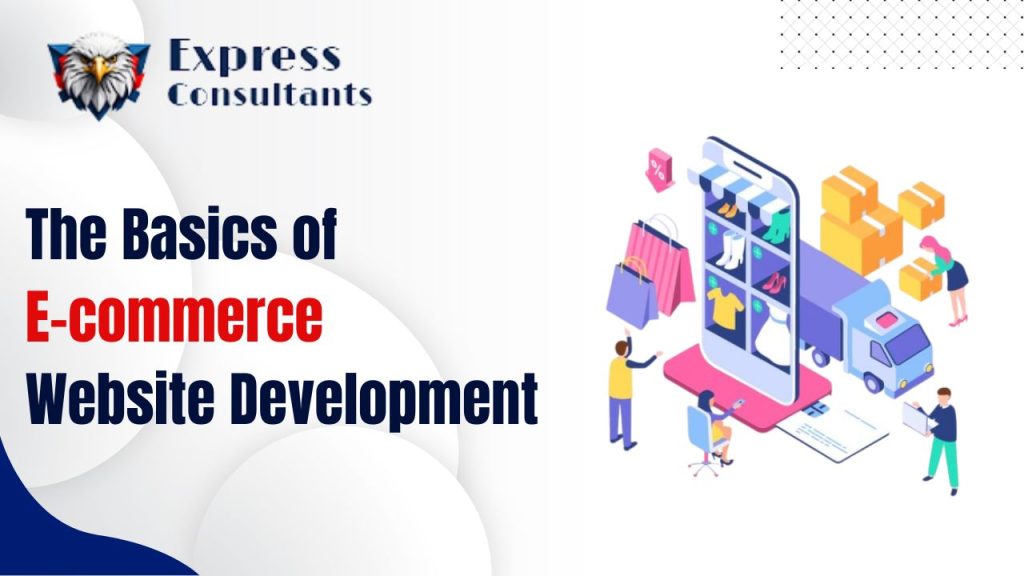
So, how do you begin this process? It starts with understanding a few essentials. Here’s a quick breakdown:
- Platform: You’ll need a strong foundation, and that’s your e-commerce platform. Think of platforms like Shopify, WooCommerce, or Magento. Each has its pros and cons, depending on your business size, products, and budget.
- Design: Your website’s design isn’t just about looking pretty; it’s about making navigation easy. Clean layouts and intuitive menus will lead to higher sales. Trust me, no one likes a messy, hard-to-navigate store.
- Functionality: Speed is everything, A website that loads quickly and operates smoothly keeps customers engaged, while a slow one will have them hitting the back button faster than you can say “checkout.”
- Mobile Responsiveness: With a huge chunk of shopping done on mobile these days, your e-commerce site better be mobile-friendly.
By now, you might be wondering, “Is this really that complex?” Well, it is—but only if you don’t have a plan.
Choosing the Right Platform for Your E-commerce Website
Alright, let’s say you’re all set to dive into e-commerce website development. One of the first things you’ll wanna figure out is what platform to use. Now, don’t stress, ‘cause this isn’t rocket science—though it can feel that way if you’re just starting out.
Here’s the lowdown:
- Budget: Don’t blow all your cash on fancy tools if you’re just starting. There are affordable platforms out there, like WooCommerce. Bigger businesses may wanna consider Magento or Shopify for more customization options and it let you scale as you grow.
- Ease of Use: Unless you’re some tech wizard, you’ll want a platform that’s easy to use and doesn’t require you to learn coding overnight. Platforms like Shopify are plug-and-play, while others like Magento offer deep customization but require more technical know-how.
- Scalability: If you plan on growing (and who doesn’t?), make sure the platform you choose can handle increased traffic and more products without crashing.
Essential Features of a Successful E-commerce Website
Okay, so you’ve got your platform. Now, what makes an e-commerce website actually good? Well, there’s a bunch of stuff to think about. Here’s a little checklist:
- User-friendly interface: Your site should be easy for customers to navigate. No one wants to hunt for the “add to cart” button.
- Mobile responsiveness: With most people shopping from their phones, your website has to look and work great on all screen sizes.
- Secure payment options: Customers need to trust that their payment info is safe. Integrating payment gateways like PayPal or Stripe helps boost that trust.
- Fast loading speed: Slow websites lose customers. Aim for your pages to load in under three seconds.
- SEO optimization: Ensure your site is optimized for search engines so customers can find you. Using the right keywords (like e-commerce website development in this blog) can boost visibility.
- Shopping cart and checkout process optimization: Make the shopping experience smooth from start to finish. Too many steps? People will bail.
Designing for High Conversion Rates
Once your site is up and running, the next goal is converting visitors into customers. But how? A good design is key here. You want your customers to feel like buying is the easiest and most natural thing to do. Simple layouts, clear CTAs (calls to action), and strategically placed “buy now” buttons can make all the difference. Plus, including customer reviews and product suggestions can encourage visitors to make a purchase they were unsure about. It’s all about guiding them gently through the process without overwhelming them.
Security Measures for E-commerce Websites
Now, let’s talk security. If your customers don’t feel safe shopping on your site, they’re out. Simple as that. So, securing your e-commerce website is a must.
- SSL certificates: These ensure that any data exchanged between your website and the customer is encrypted. You’ve probably noticed the little padlock icon next to some URLs—that’s an SSL certificate at work. Customers trust sites with these, plain and simple.
- Encryption: Keeping sensitive information safe from hackers is crucial. No one wants their credit card info floating around the web.
- Secure checkout: Make sure the payment process is seamless and secure. Multiple payment options, paired with high-level security, give customers the peace of mind they need to hit the “buy” button.
Maintaining and Updating Your E-commerce Website
Regular maintenance is just as important as development. Think of your website as a living thing. If you neglect it, things go downhill fast.
- Updates: Software updates help keep everything running smoothly. It’s like taking your car for regular servicing—you gotta do it.
- Performance monitoring: Keep an eye on how your site is performing. Is it still loading quickly? Are customers encountering errors during checkout? Constant monitoring helps catch issues before they become bigger problems.
- Security: You’ve gotta stay ahead of the game when it comes to security. Hackers are always finding new ways to exploit vulnerabilities, so make sure your site is up-to-date with the latest security measures.
Why Choose Express Consultants for E-commerce Website Development?
When it comes to e-commerce website development, you want experts who understand the ins and outs of the digital marketplace. That’s where Express Consultants come in. We don’t just build websites—we create seamless, high-converting online stores tailored to your business needs. With a team of seasoned professionals, we ensure your site is fast, secure, mobile-responsive, and optimized for SEO, giving your business the competitive edge it needs. Plus, our personalized support means you’ll never feel lost in the technical details. Ready to elevate your e-commerce game? Express Consultants has got you covered
Conclusion: Building Your E-commerce Success
So, what’s the takeaway from all of this? E-commerce website development is crucial for the success of your online business, no matter the size. From choosing the right platform to ensuring a secure and user-friendly experience, every step matters. Don’t forget—your website isn’t just a store; it’s the face of your business. Keeping it fresh, functional, and secure will keep your customers coming back for more.
You may also like : –
- 10 Best Backend Frameworks in 2024
- Top 10 Best Frontend Frameworks in 2024: The Future Is Here
- 8 Best JavaScript Backend Frameworks
FAQ
1. What is e-commerce website development?
E-commerce website development is all about creating an online store where customers can browse and buy your products or services. It includes everything from setting up the platform, designing the layout, integrating secure payment options, and optimizing for fast loading and mobile responsiveness. Think of it like building a brick-and-mortar shop, but online.
2. Why is a well-developed e-commerce website important?
A well-developed e-commerce website is crucial because it directly impacts customer experience and sales. A smooth, fast, and user-friendly site will keep customers coming back, while a slow, confusing site will drive them away. In today’s digital age, your website is often your first impression—so it better be a good one.
3. What features are essential for a successful e-commerce website?
Key features include a user-friendly interface, mobile responsiveness, secure payment options, fast loading speed, SEO optimization, and a streamlined shopping cart and checkout process. Each of these elements ensures your customers have a smooth shopping experience.
4. How do I choose the right platform for my e-commerce website?
Start by considering your budget, business size, and long-term goals. If you want something easy and quick to set up, Shopify is a solid choice. For more flexibility and customization, platforms like Magento or WooCommerce might be better.
5. What are the benefits of hiring Express Consultants for e-commerce website development?
Express Consultants offer tailored solutions to fit your specific business needs. With a focus on high-conversion designs, secure payment integrations, and SEO-optimized development, we ensure your e-commerce site is not just functional but thrives in a competitive market. Plus, our ongoing support makes sure you’re never left in the dark.
6. How can I improve the security of my e-commerce website?
To ensure top-notch security, your site should have SSL certificates for encrypted data transfers, secure payment gateways, and frequent software updates to protect against vulnerabilities. Regular maintenance and security checks also help keep your site safe from hackers.
7. How often should I update my e-commerce website?
Regular updates are essential, You should be checking performance metrics, updating software, and ensuring security features are current. This helps your site stay fast, functional, and secure. Plus, keeping content fresh will keep customers engaged and coming back.
8. Why is mobile responsiveness important for an e-commerce website?
With a large percentage of shopping done on mobile devices, having a mobile-friendly site is non-negotiable. If your site doesn’t work well on smartphones and tablets, you’re likely missing out on a huge chunk of potential customers. It’s all about convenience—people want to shop on the go.
9. How does SEO affect my e-commerce website?
SEO, or Search Engine Optimization, helps your website rank higher on search engines like Google. When your site is optimized for SEO, more people can find your products, leading to increased traffic and sales. Without it, your site could get lost in the sea of competition.

Best Web Design Company in USA – Express Consultants
Best Web Design Company in USA – Express Consultants
“First impressions are 94% design-related.” That’s not just a number—it’s a wake-up call In today’s digital age, your website is often the first encounter a potential client or customer has with your brand. Express Consultants understands this crucial reality, which is why we’ve earned the reputation as the Best Web Design Company in the USA. With a knack for blending creativity, functionality, and cutting-edge technology, we’ve become the go-to choice for businesses across the nation. But why is having a professionally designed website so important in the first place? Let’s look into it.
The Importance of a Professionally Designed Website in the USA
In the USA, where competition in every industry is fierce, having a website that stands out isn’t a luxury—it’s a necessity. A professionally designed website can make or break your business. Think about it: would you trust a company with a clunky, outdated website? Probably not. A sleek, modern design builds credibility and trust, two key factors in converting visitors into customers.
- First Impressions Matter: Your website’s design will either make visitors stick around or hit the back button faster than you can say “bounce rate.”
- SEO Benefits: A well-designed site doesn’t just look good—it performs better on search engines, driving more traffic your way.
- User Experience is Key: Nobody likes a slow, hard-to-navigate website. Express Consultants ensures your website works seamlessly across all devices, ensuring that your users have the best possible experience.
Express Consultants knows that your website isn’t just a place for information—it’s a gateway to your brand. Our expertise in crafting custom designs that are not only visually stunning but also functional is what makes us the best web design company in the USA.
Why Choose Express Consultants for Web Design?
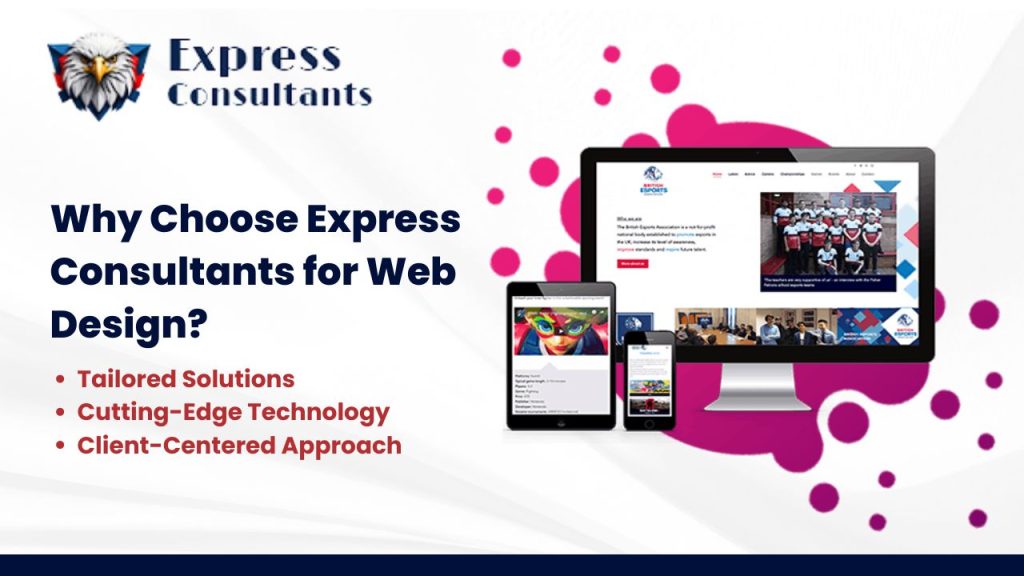
So, what exactly sets Express Consultants apart from the rest? It all comes down to our commitment to creating websites that truly represent your brand while driving real business results.
- Tailored Solutions: No cookie-cutter designs here, Express Consultants believes in creating websites that are as unique as your business. We take the time to understand your goals and target audience, ensuring that the final product is both visually appealing and strategically effective.
- Cutting-Edge Technology: Staying ahead of web design trends is a full-time job, and Express Consultants is always up to date. Whether it’s integrating the latest responsive design techniques or ensuring your site is optimized for speed and SEO, we’ve got it covered.
- Client-Centered Approach: We don’t just create websites—we build relationships. From the initial consultation to the final launch (and beyond), our team is there every step of the way, making sure your vision comes to life.
In a crowded market, it’s easy to see why businesses turn to Express Consultants for their web design needs. We don’t just aim to meet expectations—we exceed them, every time.
Key Services Offered by Express Consultants
When it comes to the variety of services offered, Express Consultants doesn’t hold back. We’re your one-stop shop for everything web design-related, and here’s a quick rundown of what we bring to the table:
- Custom Web Design: Forget the templates, Express Consultants creates custom websites tailored to your specific business needs. It’s all about building something that stands out.
- E-commerce Web Design: Got products to sell? Our e-commerce solutions are designed to help you drive sales and offer your customers a smooth, secure shopping experience.
- Responsive Design: With so many people browsing on mobile, your website needs to work well on any screen. Express Consultants makes sure your site looks and works great on desktops, tablets, and smartphones.
- User Experience (UX) and User Interface (UI) Design: We don’t just focus on looks—we focus on how your website works. The team prioritizes UX and UI to ensure your visitors have the best experience possible, increasing the chance they’ll stick around (and convert).
This mix of services guarantees that no matter what your business needs, Express Consultants has got your back. And we do it in a way that feels personalized.
What Sets Express Consultants Apart?
There are a ton of web design companies in the USA, so why choose Express Consultants? It’s simple—we go above and beyond what’s expected. We don’t just create beautiful websites (though we do that exceptionally well), we focus on performance, usability, and ROI. Many companies can give you a flashy homepage, but Express Consultants ensures that your site not only looks good but functions as a powerful marketing tool.
We understand that a website is a critical part of your business, and we make sure it delivers results. From SEO optimization to user-friendly navigation, our team leaves no stone unturned.
Our approach combines creativity with strategy. It’s not just about colors and layouts; it’s about understanding your business goals and translating them into a website that works. That’s what truly sets us apart from the pack. We’re not just another web design company—we’re a partner in your success.
Get Started with Express Consultants
Ready to take your website to the next level? Getting started with Express Consultants is easy. Whether you’re looking to build a website from scratch or revamp an existing one, our team is ready to dive in and make your vision a reality.
Reach out for a free consultation, and you’ll quickly see why we’re known as the best web design company in the USA. Our process is smooth and collaborative—we listen, we advise, and most importantly, we deliver.
Express Consultants doesn’t just provide a service—we offer an experience. From the initial brainstorming sessions to the final launch, we make sure you’re involved and informed every step of the way. Our dedication to customer satisfaction is second to none, and it’s what makes us the top choice for businesses across the country.
Conclusion
Choosing the right web design company can make all the difference, and when it comes to expertise, creativity, and results, Express Consultants stands head and shoulders above the rest. We’re not just another agency—we’re your partner in building a powerful online presence.
Whether it’s through our custom web designs, or our focus on user experience, or our client-centered approach, it’s clear why we’re the best web design company in the USA. So, why wait? Get in touch with Express Consultants today and start building a website that works as hard as you do.
FAQ
Q1: What kind of websites can Express Consultants create?
Pretty much anything you need, Express Consultants specializes in a range of services like custom web design, e-commerce websites, and responsive designs that look amazing on every device. We’re also pros at UX (User Experience) and UI (User Interface) design, so your site won’t just look good—it’ll function smoothly too, making sure your visitors stick around
Q2: How does Express Consultants approach custom web design?
Forget cookie-cutter templates. Express Consultants takes the time to understand your business and your audience. We focus on building a unique website that represents your brand and speaks directly to your customers.
Q3: Why is a responsive design so important, and does Express Consultants offer it?
Oh, 100%, with more people browsing on mobile devices these days, having a responsive website is crucial. Express Consultants ensures that your website looks sharp and works flawlessly on everything from desktops to smartphones. We focus on smooth navigation and quick load times, no matter the device.
Q4: How long does it take for Express Consultants to design a website?
It really depends on the complexity of your project, but we’re known for our efficient process. We keep you in the loop every step of the way, from concept to launch. Most websites can be completed within a few weeks, but we’ll give you a clear timeline during your consultation.
Q5: What kind of support does Express Consultants offer after my website goes live?
We’ve got your back even after launch. Express Consultants offers ongoing support and maintenance to make sure your site continues to run smoothly. Whether it’s fixing bugs, updating content, or optimizing performance, we’re always there to help you keep things fresh and functional.
Q6: How can I get started with Express Consultants?
It’s super easy. Just reach out to us for a free consultation, and their friendly team will take it from there. Whether you’re starting from scratch or looking to overhaul your existing site, Express Consultants will guide you through the process, ensuring your website is everything you’ve dreamed of and more.
Q7: Do we offer e-commerce web design?
Yep, If you’re looking to sell products online, Express Consultants can build a secure, user-friendly e-commerce site that drives sales. We’ll make sure your online store looks great and offers a smooth shopping experience for your customers, helping you increase conversions.
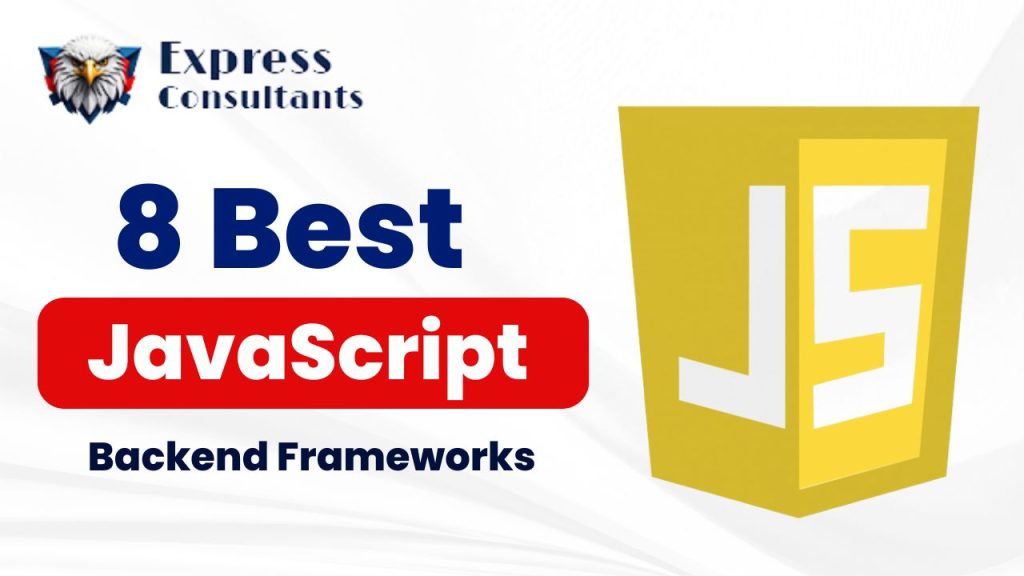
8 Best JavaScript Backend Frameworks
8 Best JavaScript Backend Frameworks
With over 98% of websites using JavaScript, it’s hard to imagine a world without it. Most of the time, we associate JavaScript with frontend development, crafting the interactive parts of a webpage. But, JavaScript is just as mighty on the backend. This article explores the best JavaScript backend frameworks available today, focusing on speed, scalability, and community support.
What Are JavaScript Backend Frameworks?
In simple terms, JavaScript backend frameworks help developers build the server side of an application. Imagine a framework as the skeleton of your app, providing the necessary tools and structure to create a backend that works seamlessly with the frontend. With JavaScript growing popular for full-stack development, frameworks have evolved to assist with everything from handling HTTP requests to managing databases.
Backend frameworks built on JavaScript aren’t just about functionality—they’re about efficiency. They allow developers to write cleaner, more maintainable code. But let’s face it, with so many options, how do you even choose the best JavaScript backend framework?
A Quick Overview of Backend Frameworks
Before diving into specifics, let’s talk about why you’d want to use a backend framework in the first place. Backend frameworks offer:
- Pre-built components: You don’t have to start from scratch.
- Efficient routing: These frameworks know how to send users where they need to go.
- Database integration: They handle connecting to and communicating with databases.
- Middleware support: To make things even more flexible, these frameworks offer middleware to process requests.
Now, let’s talk about some of the best frontend frameworks that also offer amazing backend support!
Top 8 Best JavaScript Backend Frameworks in 2024
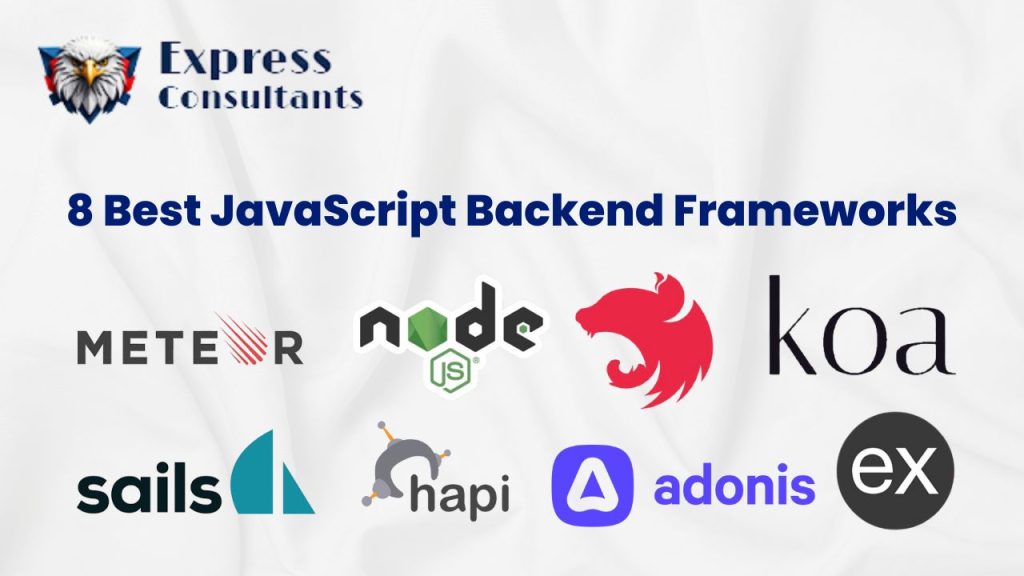
1. Node.js (Runtime)
It’s impossible to start this discussion without mentioning Node.js, arguably the most well-known JavaScript runtime. Powered by Google’s V8 engine, Node.js allows developers to write JavaScript for both client and server-side applications, making it a preferred choice for full-stack development.
Why Node.js?
- Speed and Performance: Node.js excels at handling real-time applications like chats, collaboration tools, and streaming platforms. Its non-blocking, asynchronous architecture means it handles multiple requests simultaneously, making it incredibly fast.
- Vibrant Ecosystem: With NPM (Node Package Manager), developers have access to thousands of packages and tools, allowing for rapid development and customization.
- Community Support: Given its popularity, you’ll always find an answer to your problem somewhere on the internet. It’s widely adopted, and tons of tutorials, forums, and resources are available for beginners and advanced users alike.
- Side note: If you’re diving into full-stack development, learning Node.js is almost a rite of passage. Most modern JavaScript backend frameworks like Express.js and NestJS are built on top of Node.js, making it an essential tool to master.
2. Express.js
If you’re using Node.js, you’ll likely come across Express.js, one of the most lightweight and flexible frameworks for building web applications. It’s minimal but highly extensible, letting you build scalable apps without tons of bloat.
Advantages:
- Simplicity: Express lets you handle routes with ease, and setting up middleware is straightforward.
- Flexibility: You can add exactly the modules you need without being bogged down by unnecessary features.
- Speed: It’s built on top of Node.js, meaning you get the same non-blocking, event-driven architecture.
Express.js is perfect if you’re looking for something quick and easy but still powerful enough to handle complex apps.
3. NestJS
Now, if you want something more structured with TypeScript support, NestJS is the best JavaScript backend framework for you. Inspired by Angular, Nest provides a modular architecture that allows developers to create highly testable, scalable, and maintainable server-side applications.
Why NestJS?
- Modularity: Nest forces a modular structure, making large applications easier to maintain.
- TypeScript First: Nest is built with TypeScript in mind, giving you all the benefits of static typing.
- Compatibility: You can easily integrate it with other libraries or frameworks, even those from outside the Node.js ecosystem.
It’s perfect for building enterprise-level applications with well-defined architecture.
4. Koa.js
Built by the same team that developed Express, Koa.js is a more modern take on web frameworks. Unlike Express, Koa focuses on being even lighter and more modular. Instead of giving you everything out of the box, Koa is designed to give you flexibility—no middlewares are bundled, so you can use only what you need.
Why Koa.js?
- Minimalistic: No unnecessary bloat. Use only the components you need.
- Modern Design: Koa was built with async functions from the start, meaning it’s future-proof for handling asynchronous code.
- Clean Syntax: Koa’s use of generators and async/await makes writing non-blocking code more intuitive.
If you love Express but want something sleeker and more modern, Koa is definitely worth checking out.
5. Sails.js
For developers looking to build robust APIs or real-time applications, Sails.js is a fantastic choice. It’s a full-featured MVC (Model-View-Controller) framework built on top of Node.js. Sails simplifies many tasks and comes with built-in support for WebSockets, making it ideal for apps requiring real-time updates, such as chat apps or dashboards.
Why Sails.js?
- Data Agnostic: Sails works with any database, whether you’re using SQL or NoSQL.
- Real-Time Features: It makes building apps with WebSockets a breeze.
- Convention Over Configuration: Sails follows the philosophy of giving developers sensible defaults, so you don’t have to spend time configuring every little detail.
Sails.js is great if you want an opinionated framework that does a lot for you out of the box.
6. Hapi.js
Originally created by Walmart, Hapi.js is a secure, reliable framework ideal for building scalable applications. It provides a strong plugin system and focuses on configuration over code, which is perfect for large teams or enterprises looking for consistency in their codebase.
Advantages of Hapi.js:
- Robust Security: Hapi includes built-in security features, making it ideal for apps that require strict security protocols.
- Extensibility: Hapi’s plugin architecture allows you to extend the framework easily.
- Configuration Over Code: Hapi favors configuration, meaning you can adjust behavior without having to write extra code.
Hapi.js works well for large-scale apps with a need for security and customization.
7. Meteor.js
If you’re after a full-stack solution, Meteor.js is one of the best JavaScript frameworks that handle both frontend and backend development seamlessly. Meteor makes building real-time web apps simple and fast, handling everything from the database to the frontend with ease.
Why Meteor.js?
- Full-Stack Integration: Meteor allows you to use the same JavaScript code for both the frontend and backend.
- Real-Time by Default: Meteor’s real-time data synchronization makes it perfect for collaborative applications.
- Ecosystem: With its own package system, Meteor lets you easily integrate third-party tools.
Meteor is excellent for startups or developers wanting an all-in-one solution that covers both client and server-side.
8. AdonisJS
AdonisJS is a Laravel-inspired Node.js framework that offers a solid foundation for building web applications with a well-structured architecture. It’s ideal for developers who want to build fast, scalable, and maintainable apps with minimal setup.
Why AdonisJS?
- Built-In ORM: Adonis comes with a powerful Object Relational Mapper, allowing seamless interaction with databases.
- Complete Solution: Adonis has many features out-of-the-box, so you can focus on building your app without piecing together multiple tools.
- Simple to Use: It’s developer-friendly, with clear documentation and an easy learning curve.
AdonisJS works perfectly for developers who want structure and productivity from the start.
The Advantages of JavaScript Backend Frameworks
Alright, let’s break down why using one of these JavaScript backend frameworks is a game-changer:
- Scalability: Most JavaScript backend frameworks, especially Node.js, excel in scaling. It handles a large number of concurrent connections efficiently, which is critical for growing applications.
- Faster Development: With JavaScript on both the frontend and backend, you can have faster iterations and simpler codebases.
- Cross-platform: Many of these frameworks are cross-platform, allowing apps to run seamlessly on various operating systems.
- Community and Support: With frameworks like Express.js and NestJS, you’ve got a large, active community ready to offer help, making problem-solving a breeze.
Side thought: Have you ever noticed that JavaScript frameworks have such extensive libraries? This makes them versatile—whether you’re working on a simple web app or a high-demand e-commerce site.
Which JavaScript Backend Framework Should You Choose?
When deciding which framework is the best, it depends on the project you’re working on. Here’s a quick breakdown to help you decide:
- For Small Projects: Go for Express.js. Its minimalistic approach means you can focus on getting your app off the ground quickly with less complexity.
- For Complex, Enterprise-Level Projects: NestJS is ideal. It provides a solid structure, ensuring that even as your app grows, the codebase remains clean and manageable.
- For Real-Time Applications: If you’re developing real-time apps like chat applications, online gaming, or live collaboration tools, the Node.js runtime is your best friend. Its event-driven architecture makes it ideal for handling multiple connections efficiently.
- For Lightweight, Minimalist Apps: Koa.js is perfect. With a smaller footprint than Express, it’s great for building clean, modern web apps with fewer dependencies.
- For Scalable, Real-Time Systems: Sails.js is the way to go. It’s great for building real-time apps like chats or multiplayer games due to its built-in WebSocket support.
- For Secure, Large-Scale Applications: Hapi.js is known for its strong focus on security and extensibility. It’s a top pick if you’re working on apps requiring robust security measures.
- For Full-Stack, Real-Time Apps: Meteor.js offers seamless full-stack integration, making it a good choice if you’re looking to build real-time apps with both frontend and backend capabilities in a single framework.
- For Database-Heavy Apps: AdonisJS stands out for apps with significant database interactions, thanks to its built-in ORM (Object-Relational Mapping), making database management a breeze.
| Framework | Scalability | Learning Curve | Ideal Use Cases | Main Strength |
| Node.js | High | Easy | Real-time apps (chats, collaboration) | Speed and performance |
| Express.js | High | Easy | APIs, small to medium-sized applications | Lightweight and flexible |
| NestJS | High | Moderate | Enterprise apps, large-scale projects | Modular and TypeScript-first |
| Koa.js | Moderate | Easy | Modern, minimalistic apps | Clean syntax and minimalism |
| Sails.js | High | Moderate | Real-time apps, APIs, scalable systems | WebSocket and API support |
| Hapi.js | High | Moderate | Large-scale, secure apps | Security and extensibility |
| Meteor.js | High | Moderate | Full-stack apps, real-time apps | Full-stack integration |
| AdonisJS | Moderate | Easy to Moderate | Web apps with database interactions | Built-in ORM and simplicity |
Choosing the best frontend framework to pair with your backend framework is just as important, ensuring you deliver smooth, responsive, and engaging experiences for users.
Conclusion
The world of backend development has been revolutionized by the rise of JavaScript, and the frameworks discussed here—Node.js, Express.js, NestJS, Koa.js, Sails.js, Hapi.js, Meteor.js, and AdonisJS—prove that it’s possible to build scalable, fast, and reliable applications. Choosing the right one depends on your project’s specific requirements and the skillset of your development team. Whether you’re building a simple API or a complex, real-time web application, these frameworks have your back.
In the end, whether you’re just starting out or a seasoned developer, there’s never been a better time to dive into JavaScript backend frameworks.
You may also like : –
- Top 10 Best Frontend Frameworks in 2024: The Future Is Here
- 10 Best Backend Frameworks in 2024
- Top 7 AI Trends To Look Out for in 2024
FAQs
1. What’s the best JavaScript backend framework for beginners?
If you’re just starting out, Express.js is the perfect option. It’s lightweight, easy to learn, and has a massive community that can help you if you get stuck. You can quickly set up an API or a small web app without too much hassle.
2. Is Node.js a framework or a runtime?
Node.js is actually a JavaScript runtime, not a framework. It allows you to run JavaScript on the server, which is why it’s often confused with a framework. However, frameworks like Express.js or NestJS are built on top of Node.js to make backend development easier.
3. Which framework is best for building real-time applications?
For real-time apps like chat platforms or live collaboration tools, Node.js paired with Sails.js or Meteor.js is a great combination. Both offer excellent support for real-time data and WebSockets, making it super smooth to create interactive apps.
4. How do I choose between Express.js and Koa.js?
Both are great, but it depends on what you need. Express.js is more feature-rich out-of-the-box and has been around longer, meaning there’s plenty of support available. Koa.js, on the other hand, is more minimalist, so if you want more control and don’t need all the features of Express, Koa is a solid choice
5. Which framework is best for enterprise-level projects?
If you’re working on a large, complex project, NestJS is your best bet. It’s built with scalability in mind, offers TypeScript support, and is highly modular, making it perfect for big applications that need long-term maintainability.
6. What’s the main advantage of using Hapi.js?
Hapi.js shines when it comes to building secure, large-scale apps. It has a strong emphasis on security features and offers extensive configuration options, so you can fine-tune your app exactly how you want it.
7. Are there any frameworks that provide a full-stack solution?
Meteor.js is a full-stack framework that allows you to build both frontend and backend using JavaScript. It’s especially good if you want a seamless development experience without jumping between multiple technologies.
8. How does AdonisJS differ from other frameworks?
AdonisJS comes with a built-in ORM (Lucid) that makes database handling much easier, especially for projects with a heavy database requirement. It’s also quite easy to set up, with a structure similar to popular frameworks like Laravel (for PHP developers out there).

Top 10 Best Frontend Frameworks in 2024: The Future Is Here
Top 10 Best Frontend Frameworks in 2024: The Future Is Here
Frontend frameworks are now more vital than ever, making it easier for developers to build smooth, efficient, and responsive websites. But with so many choices out there, how do you know which one to go with? Well, in 2024, a few frameworks are standing out from the crowd, and, you don’t wanna miss out on knowing about them.
What Are Frontend Frameworks?
Okay, so before diving into the best frontend frameworks in 2024, let’s quickly cover what they actually are. In simple terms, a frontend framework is like a toolbox for web developers. It gives you pre-written code, templates, and components to help create the part of a website that users interact with – the buttons, forms, animations, and all that jazz. You could build everything from scratch, but with frontend frameworks, you save time and ensure your site runs smoothly across different devices.
Think of it like building a house. You could make every brick yourself, or you could use pre-made ones that are tried and tested. Using a framework means your house (or website) gets built faster, looks better, and is sturdier in the long run.
Why Frontend Frameworks Matter in 2024
The tech world changes faster than ever, Keeping up means using tools that are efficient, secure, and scalable. In 2024, choosing the best frontend framework could be the difference between a website that impresses and one that lags behind.
Now, let’s get into the nitty-gritty of the best frontend frameworks that will dominate in 2024.

1. React
React is still the king of frontend frameworks. Created by Facebook, this framework has been a favorite for a long time, and 2024 is no different. React’s component-based architecture makes it incredibly flexible and allows for high levels of reusability in code. Plus, the vast community support means that finding solutions to problems is just a Google search away.
- Why It’s Still Popular: React focuses on simplicity and performance, which is why developers love it.
- Example: React is used by companies like Airbnb, Uber, and .
2. Vue.js
Vue.js continues to gain traction because of its simplicity and versatility. It’s a great fit for both beginners and advanced developers alike. Vue is lighter than React and Angular, making it a go-to choice for smaller projects or developers who value ease of use over extensive functionality.
- Best For: Vue shines in building single-page applications (SPAs) and can easily be integrated into projects that already use other JavaScript libraries.
- Example: Alibaba and Xiaomi have embraced Vue.js in their tech stacks.
3. Angular
Angular might seem old-school to some, but it’s been revamped consistently, and it’s still a powerhouse in the frontend space. In 2024, Angular remains one of the most complete solutions for developing large-scale applications. It offers two-way data binding, meaning changes in the UI reflect instantly in the data model and vice versa.
- Pro Tip: Angular’s opinionated structure is great for teams that prefer consistency and want an all-in-one solution.
- Example: Google itself, which created Angular, uses it for various internal tools and platforms.
4. Svelte
Now, if you haven’t heard of Svelte yet, get ready. Unlike React and Vue, Svelte takes a different approach by shifting much of the work to compile time rather than in the browser. This results in faster load times and less bulky code.
- What Makes It Stand Out: Svelte doesn’t use a virtual DOM, which means it compiles your code to optimized vanilla JavaScript.
- Example: Major companies like The New York Times and Spotify are exploring Svelte’s benefits.
5. Next.js
Technically a framework built on top of React, Next.js has gained massive popularity for building server-side rendered applications. It’s perfect for developers who want all the power of React, combined with server-side rendering and static site generation.
- When to Use: If SEO and performance are priorities, Next.js is the way to go.
- Example: Vercel, Twitch, and Hulu all rely on Next.js for parts of their frontends.
6. Nuxt.js
Like Next.js, but for Vue, Nuxt.js offers server-side rendering and is particularly great for building SEO-friendly applications. If you’re a Vue lover and want something more powerful for big projects, Nuxt.js is your friend in 2024.
- SEO Boost: Since Nuxt handles server-side rendering, it’s ideal for apps that need to rank well in search engines.
- Example: Companies like Ubisoft and utilize Nuxt for their web apps.
7. Alpine.js
Alpine.js is small, simple, and perfect for developers who want to add dynamic functionality to websites without the overhead of a full-fledged framework like React or Vue. It’s a great alternative when you just need something lightweight for specific elements on a page.
- Why Consider It: Perfect for projects where you don’t want the full weight of React or Vue but still need dynamic functionality.
- Example: Used by small startups and individual developers looking to keep things minimal.
8. Ember.js
Ember has been around for years, but in 2024, it’s still hanging on as one of the best choices for building large-scale applications. It’s known for its strong conventions and powerful router.
- Best For: Large enterprise-level applications that need stability.
- Example: Yahoo and LinkedIn have been long-time users of Ember.
9. Backbone.js
Yes, Backbone is still in the game, While it’s not as shiny or trendy as the newer frameworks, it remains a lightweight option for developers who need simplicity and structure in their code. It’s particularly useful for building web applications that don’t require heavy lifting.
- Why Choose It: It’s simple and provides just enough structure for small to mid-sized projects.
- Example: Pinterest and Trello are among the many platforms that still use Backbone.
10. Solid.js
Solid.js is one of the newer kids on the block and has been getting a lot of attention lately. Like React, it offers a component-based architecture but is said to have better performance due to its fine-grained reactivity.
- What Makes It Unique: It offers many of React’s features but with a different approach to rendering, resulting in less re-renders.
- Example: While still growing, Solid.js is finding its place in the market for performance-driven applications.
Key features, Example Use Cases of every Front-end Framework and Why they stand out
| Framework | Best For | Key Features | Example Use Cases | Why Choose It in 2024? |
| React | Large-scale apps, SPAs | Component-based architecture, huge community | , Airbnb, Uber | Flexible, fast, and backed by a massive community support |
| Vue.js | Small to medium apps, SPAs | Lightweight, easy to learn, versatile | Alibaba, Xiaomi | Simple yet powerful; ideal for quick development and integration |
| Angular | Enterprise-level apps | Two-way data binding, comprehensive framework | Google, Microsoft | Full-fledged solution, best for large-scale, complex applications |
| Svelte | Performance-focused apps | Compiles at build time, no virtual DOM | The New York Times, Spotify | Minimal runtime, faster load times, and smaller bundle sizes |
| Next.js | SEO-friendly apps, SSR | Server-side rendering, static site generation | Hulu, Twitch | Ideal for React developers who need server-side rendering and SEO |
| Nuxt.js | Vue.js projects, SEO | Server-side rendering, powerful routing | Ubisoft, | Best choice if you love Vue but need the power of SSR and better SEO |
| Alpine.js | Simple interactive features | Minimalist, lightweight, easy to integrate | Small startups, individual developers | Perfect for small projects needing dynamic behavior without the bulk of a full framework |
| Ember.js | Long-term, large projects | Strong conventions, powerful router | LinkedIn, Yahoo | Excellent for large-scale projects that need consistency and stability |
| Backbone.js | Lightweight apps | Minimalist structure, simple models and views | Pinterest, Trello | Great for smaller, less complex projects that don’t need a full framework |
| Solid.js | Performance-driven apps | Fine-grained reactivity, minimal re-renders | Growing in popularity, used in performance-focused projects | Best for projects where every millisecond of performance counts |
The Advantages of Best Frontend Frameworks in 2024
So, why should you care about using the best frontend framework in 2024? Let me break it down for you:
• Speed: Frameworks speed up development by providing pre-written components.
• Consistency: Using a framework ensures that your code follows a consistent structure, making it easier to maintain.
• Scalability: Whether you’re building a small blog or a massive e-commerce site, frameworks can scale to meet your needs.
• Community Support: Most of the best frontend frameworks have thriving communities, meaning you’ll never be stuck with an issue for too long.
Conclusion
As you can see, the best frontend frameworks in 2024 provide a range of options for developers, from lightweight solutions like Alpine.js to full-scale frameworks like Angular. Each has its strengths, and depending on your project’s needs, there’s no shortage of choices. The key takeaway? Whether you’re looking for speed, ease of use, or SEO benefits, there’s a framework out there that fits the bill. So, ready to level up your development game? Start exploring these frameworks today.
You may also like : –
- 10 Best Backend Frameworks in 2024
- Why Your Online Business Needs AI-Powered Chatbots
- How Cross-Platform App Development Saves Time and Money for Startups
FAQ: Best Frontend Frameworks in 2024
1. What exactly is a frontend framework?
A frontend framework is like a toolkit that helps developers create the visual part of a website—everything users see and interact with. It comes with pre-built components, making the development process faster and easier.
2. Which frontend framework is the best in 2024?
It really depends on what you’re working on, but React continues to dominate in 2024. It’s super flexible and backed by a huge community. But don’t sleep on Vue.js or Svelte—they’re also killing it with their simplicity and performance.
3. Why should I use a frontend framework instead of coding from scratch?
Using a frontend framework saves you time and headache. You don’t have to reinvent the wheel; frameworks offer pre-written code for common tasks like forms, animations, and data binding. Plus, they ensure your website works well across different devices and browsers.
4. Is React still the top choice for developers in 2024?
Yup, React is still leading the pack. It’s loved for its component-based approach and huge community support. Whether you’re building small projects or large applications, React has got you covered.
5. What’s the deal with Vue.js? Why is it so popular?
Vue.js is gaining even more fans in 2024 because it’s lightweight and easy to pick up. Whether you’re a beginner or a seasoned developer, Vue is versatile enough to handle simple to complex projects. It’s like the “Goldilocks” of frameworks—just the right balance between power and simplicity.
6. Is Svelte worth learning in 2024?
Svelte is doing something pretty unique by moving a lot of the work to compile time, meaning your app runs faster. If performance is a priority for you, Svelte is a framework to seriously consider.
7. What’s the difference between Next.js and Nuxt.js?
Next.js is built on React and is perfect if you need server-side rendering and SEO optimization. Nuxt.js does the same thing but for Vue.js. Both frameworks are ideal if you’re building websites where search engine performance is key.
8. Are older frameworks like Angular and Backbone still relevant in 2024?
Yep, they’re not going anywhere Angular is still a beast when it comes to large-scale enterprise apps, and Backbone remains a solid, lightweight choice for smaller projects. They might not be the trendiest, but they get the job done.
9. What’s Solid.js, and why is it gaining attention?
Solid.js is a newer player in the game but has been making waves with its performance. It’s similar to React but focuses on minimizing re-renders, making it super-fast for complex applications. If speed is your thing, Solid.js is definitely worth checking out.
10. How do I choose the right frontend framework for my project?
Consider your project’s needs—are you building a large app or a simple website? Do you need server-side rendering for SEO? If you want flexibility, go with React or Vue. For performance, Svelte or Solid.js could be great choices. At the end of the day, it’s about picking the tool that fits your specific needs.
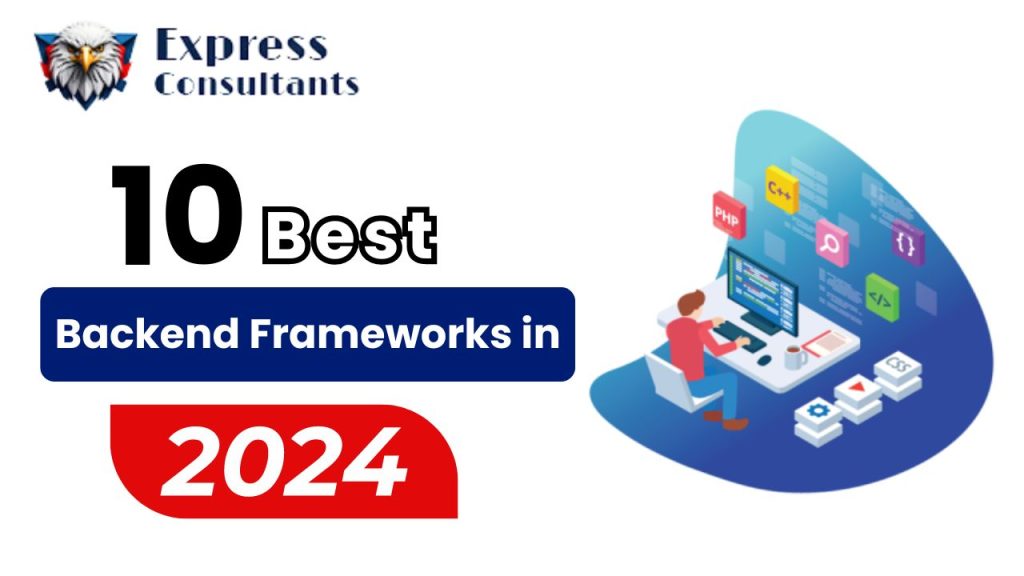
10 Best Backend Frameworks in 2024
10 Best Backend Frameworks in 2024
The backbone of any successful web or mobile application often lies in the framework that powers it. Choosing the best backend framework is no longer a luxury—it’s a necessity for building scalable, efficient, and fast applications. So, what’s changed in 2024? And which backend frameworks are leading the pack? Let’s dive into it.
What Are Back-End Frameworks?
In simple terms, backend frameworks are the unsung heroes behind the curtain, ensuring that everything on a website or app functions smoothly. When you use an app and click a button, the backend framework ensures that the right data is fetched, processed, and sent back to the front end without hiccups. It’s like the kitchen in a restaurant—you don’t see it, but you rely on it to make everything work.
These frameworks simplify the development process, providing pre-built modules and structures so developers don’t have to start from scratch every time. It’s like having a LEGO set instead of building bricks from mud. Pretty cool, right? In 2024, the demand for more sophisticated frameworks has skyrocketed, and developers are spoiled for choice.
Why Use a Backend Framework?
Why reinvent the wheel when backend frameworks offer tried-and-true solutions for common issues? Here are a few reasons:
- Faster Development: Pre-built components save time.
- Scalability: Designed to grow with your application.
- Security: Robust frameworks come with built-in security features.
Alright, enough chit-chat. Let’s talk about the best backend frameworks of 2024.
The 10 Best Backend Frameworks in 2024
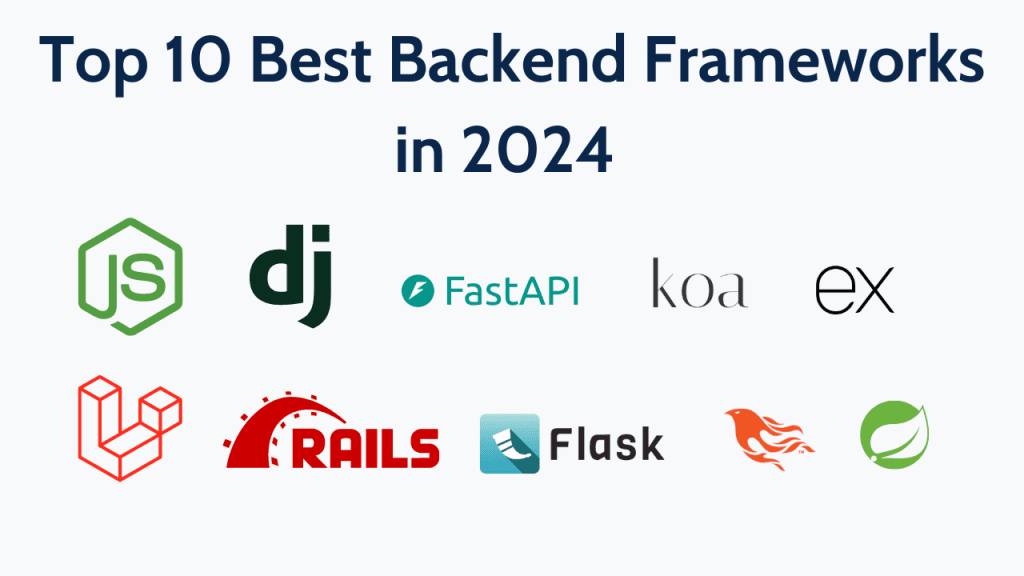
1. Node.js
Node.js remains a top contender in 2024. It’s fast, lightweight, and perfect for real-time applications. Think of apps like Slack and Trello—they run on Node.js because it handles asynchronous tasks brilliantly. What makes it stand out? It’s built on JavaScript, meaning full-stack developers can use one language for both front-end and back-end tasks. If you’re familiar with JavaScript, you can hop on the Node.js bandwagon without missing a beat.
Benefits Node.js
- JavaScript for full-stack development: Use one language (JavaScript) for both frontend and backend.
- Non-blocking architecture: Handles multiple tasks simultaneously, making it perfect for real-time apps.
- Lightweight and scalable: Great for applications expected to grow and handle high traffic.
- Large community: Extensive resources, tutorials, and libraries available for developers.
2. Django
Python lovers, rejoice, Django continues to shine as a secure, high-level Python framework that simplifies web development. Used by giants like Instagram and Pinterest, Django’s “batteries included” philosophy gives developers everything they need, right out of the box. Plus, it’s known for its focus on security, which is huge in 2024, especially with the growing concerns about data breaches.
Benefits of Django
- “Batteries included”: Comes with everything needed to build secure, scalable web applications.
- High security: Built-in security features like SQL injection prevention and cross-site request forgery protection.
- Great for rapid development: Offers reusable code and automatic admin panels, speeding up the development process.
- Strong Python ecosystem: Integrates well with data science and machine learning projects.
3. Ruby on Rails
This veteran framework is still hanging in there, and for good reason. Ruby on Rails is loved for its simplicity and productivity. The framework encourages convention over configuration, making it easier for developers to jump right in. You can build powerful applications without sweating over the small stuff. Oh, and did we mention Basecamp and Shopify use it?
Benefits of Ruby on Rails
- Convention over configuration: Speeds up development by reducing the need for decision-making about structure.
- Large number of pre-built libraries: Comes with “gems” that allow developers to easily add functionality.
- Developer-friendly: Focuses on simplicity and productivity, making it ideal for quick development.
- Mature ecosystem: Proven reliability with long-term support and a dedicated community.
4. Laravel
For PHP fans, Laravel is the backend framework to watch. It’s elegant, easy to understand, and brings simplicity to complex PHP coding. Laravel’s ecosystem is rich with tools and libraries that make authentication, routing, and caching a breeze. Plus, with the community continuing to grow, you can always find a package or plugin for just about anything you need.
Benefits of Laravel
- Elegant syntax: PHP framework with clean, readable code.
- Rich ecosystem: Offers a wide range of tools for authentication, routing, sessions, and caching.
- Excellent for beginners: Simple to pick up, even if you’re new to PHP.
- Security features: Includes built-in protection against common vulnerabilities.
5. Flask
While Django is the go-to for full-featured applications, Flask is the minimalist counterpart. It’s a lightweight Python framework that gives developers flexibility and control. Flask is perfect for small projects or APIs. Developers love it because it allows them to get something up and running quickly without being tied down by too many built-in features.
Benefits of Flask
- Lightweight: Minimalistic, giving developers more flexibility and control.
- Great for small projects or APIs: Perfect for creating smaller apps or microservices without extra bloat.
- Easy to learn: Ideal for developers who want a simple framework with fewer built-in features.
- Highly customizable: Allows you to build only what you need.
6. Spring Boot
Java developers, unite, Spring Boot remains a popular choice in 2024, particularly for enterprise-level applications. It simplifies Java development, offering microservice architecture capabilities. Companies like Netflix and Amazon swear by Spring Boot for handling their massive infrastructures, so you know it’s reliable.
Benefits of Spring Boot
- Microservice architecture: Ideal for building large-scale, distributed systems.
- Enterprise-grade: Trusted by major companies like Netflix and Amazon.
- Java-based: Great for Java developers who need a robust framework.
- Strong performance: Efficient memory management, making it suitable for high-performance apps.
7. Express.js
If you’re into Node.js, you’ve likely heard of Express.js. It’s a minimal and flexible Node.js framework that provides a solid foundation for developing web applications and APIs. The learning curve is low, and it’s highly scalable, making it a go-to framework for many companies in 2024. If you’re building a single-page app or a REST API, Express.js is your friend.
Benefits of Express.js
- Minimal and flexible: Simple, yet highly customizable for Node.js developers.
- Perfect for APIs: Great for building RESTful APIs quickly and efficiently.
- Scalable: Can handle small applications or large-scale projects with ease.
- Active community: Plenty of libraries and resources to help developers.
8. Phoenix (Elixir)
Phoenix is built on Elixir and brings speed and scalability to the table. In 2024, it’s gaining traction because of its real-time capabilities, which are crucial for chat applications, gaming, and financial services. The Elixir ecosystem ensures that applications are fault-tolerant and can handle massive traffic without crashing.
Benefits of Phoenix (Elixir)
- Real-time capabilities: Ideal for chat applications, gaming, or financial services.
- Fault-tolerant: Can handle high traffic without crashing, making it incredibly reliable.
- Concurrency: Uses Elixir’s powerful concurrency model, allowing it to handle thousands of connections simultaneously.
- Performance: Highly optimized for speed and scalability.
9. Koa.js
Another framework built by the creators of Express.js, Koa is even more lightweight, focusing on making the middleware more customizable and less bulky. Developers love it for its simplicity and flexibility, which allows them to create more modular applications. If you’re looking for a modern take on the backend, Koa.js is worth checking out.
Benefits of Koa.js
- Modern and lightweight: Built by the creators of Express.js, but with fewer restrictions and more flexibility.
- Customization: Offers more control over the middleware stack, allowing for cleaner and more modular code.
- Small footprint: Great for developers who want minimalism without sacrificing functionality.
- Improved error handling: Handles errors better than Express.js, making debugging easier.
10. FastAPI
As the name suggests, FastAPI is all about speed. This Python-based framework has been rising in popularity due to its ability to create fast web APIs. If you’re dealing with high-performance applications like machine learning or data science projects, FastAPI is a fantastic choice. It’s one of the fastest-growing frameworks in 2024, and we’re not surprised.
Benefits of FastAPI
- Incredibly fast: One of the fastest backend frameworks, perfect for high-performance APIs.
- Asynchronous support: Built-in support for asynchronous requests, which speeds up the application.
- Python-based: Leverages Python’s simplicity while focusing on speed.
- Automatic documentation: Automatically generates interactive API documentation, which is super helpful for developers.
Each framework brings unique advantages, so choosing the best one depends on your specific project needs, whether it’s speed, scalability, security, or ease of development.
Top 10 Best Backend Frameworks in 2024 Key features and Best Use Cases of every Framework
| Framework | Key Features | Best Use Cases |
| Node.js | Non-blocking, event-driven architecture; JavaScript for full-stack development | Real-time apps (e.g., chat, collaboration tools) |
| Django | High security; “Batteries included” philosophy | Large, scalable web applications; secure apps |
| Ruby on Rails | Convention over configuration; large library of gems | Quick MVP development, startups |
| Laravel | Elegant syntax; rich ecosystem with built-in tools | Web applications requiring authentication, sessions, and more |
| Flask | Lightweight and flexible; minimalistic design | Small projects, microservices, APIs |
| Spring Boot | Microservice-friendly; enterprise-grade performance | Large-scale distributed systems, enterprise apps |
| Express.js | Minimal, flexible; ideal for APIs | Building RESTful APIs, web apps |
| Phoenix | Real-time performance; fault-tolerant | High-traffic apps, real-time web apps (e.g., gaming) |
| Koa.js | Lightweight; modern and flexible | Modular web applications |
| FastAPI | Asynchronous support; automatic API documentation | High-performance APIs, Python-based systems |
Advantages of Using the Best Backend Frameworks in 2024
Here’s the deal: in 2024, the best backend frameworks make a developer’s life easier by offering a host of advantages. First off, they provide better security features. It’s like having a burglar alarm for your app, With cyber-attacks becoming more sophisticated, frameworks like Django and Laravel are stepping up their security game.
Not to mention, they speed up the development process. Time is money, and these frameworks ensure you can launch your app quicker. Plus, scalability is a huge bonus—when your app grows, the framework grows with it. Imagine your app being able to handle millions of users without breaking a sweat. That’s the magic of choosing the right backend framework.
And let’s not forget about the community support. Frameworks like Node.js and Laravel boast massive communities. This means if you hit a roadblock, you’ve got thousands of developers who can lend a hand. Talk about a support network.
Somes Other Benefits of Using a Backend Framework
Using a backend framework in 2024 means more than just getting the job done. You’re investing in the future of your project. Think about it: these frameworks handle the heavy lifting, allowing you to focus on what matters—building great features for your users. They’re efficient, scalable, and battle-tested.
Frameworks like Express.js and FastAPI also make it easy to create APIs that can be integrated into other applications. Need real-time communication for a chat app? Phoenix has you covered. Want something that handles asynchronous tasks seamlessly? Node.js is the answer.
Conclusion
In 2024, choosing the best backend frameworks isn’t just about trends—it’s about ensuring your project’s success. Whether you’re building a small app or managing a large-scale enterprise project, these frameworks offer the tools and support you need. From the robust security of Django to the speed of FastAPI, there’s a framework for every developer’s needs. Ready to take your next project to the next level? Dive into these frameworks and see how they transform your development experience.
You may also like: –
- Why Your Online Business Needs AI-Powered Chatbots
- Building a Custom Website Design vs. Using a Template: Which One Is Right for You?
FAQ
1. What is a backend framework?
A backend framework is like the engine of a car—it powers everything behind the scenes. It helps developers build the logic that runs an app or website, handling tasks like database interactions, user authentication, and server-side processing. In short, it makes the app work smoothly without you seeing all the magic happening in the background.
2. Why are backend frameworks important in 2024?
In 2024, backend frameworks are more critical than ever because they provide built-in solutions for security, scalability, and speed. With users demanding faster, more secure apps, having the right framework can make or break your project. These frameworks are designed to handle complex applications and ensure everything runs without a hitch—even as your app grows.
3. What are the best backend frameworks in 2024?
The top backend frameworks this year include:
- Node.js
- Django
- Ruby on Rails
- Laravel
- Flask
- Spring Boot
- Express.js
- Phoenix (Elixir)
- Koa.js
- FastAPI
Each of these has its strengths, from security to speed, depending on what your project needs.
4. Which backend framework is the fastest in 2024?
FastAPI lives up to its name and is considered one of the fastest backend frameworks in 2024. If speed and performance are top priorities for your app, especially for APIs, FastAPI should definitely be on your radar.
5. What makes Node.js so popular in 2024?
Node.js continues to dominate because it’s built on JavaScript, meaning developers can work on both frontend and backend using a single language. Its non-blocking, event-driven architecture makes it perfect for real-time applications like chat apps and collaborative tools. Plus, it’s lightweight and extremely scalable.
6. Is Django still relevant in 2024?
Absolutely, Django is one of the most secure and comprehensive backend frameworks out there. In an era of rising cyber threats, Django’s focus on security makes it a top choice for developers in 2024.
7. What’s the difference between Flask and Django?
Django is a full-featured framework that comes with a lot of built-in tools, making it perfect for large, complex applications. Flask, on the other hand, is much more lightweight and gives developers more flexibility and control, making it a better option for smaller projects or when you don’t need all the extras.
8. What framework should I use if I want to build a scalable app?
If you’re thinking big and want an app that can scale easily, frameworks like Node.js, Spring Boot, and Phoenix are great choices. These frameworks are built to handle heavy traffic and can grow with your app, making them ideal for large-scale projects.
9. Are backend frameworks beginner-friendly?
Some are more beginner-friendly than others. For example, Laravel and Flask are relatively easy to pick up, even if you’re new to backend development. On the other hand, frameworks like Spring Boot might have a steeper learning curve due to their complexity but are great for more experienced developers.
10. Why should I care about community support when choosing a backend framework?
The more popular the framework, the larger the community—this means more tutorials, plugins, and troubleshooting help when you’re stuck. Frameworks like Laravel, Node.js, and Django have massive communities behind them, so if you run into issues, you won’t have to figure things out alone.

Why Full Stack Development is Essential for Startups: Key Benefits

How to Choose the Right AI Development Service for Your Company
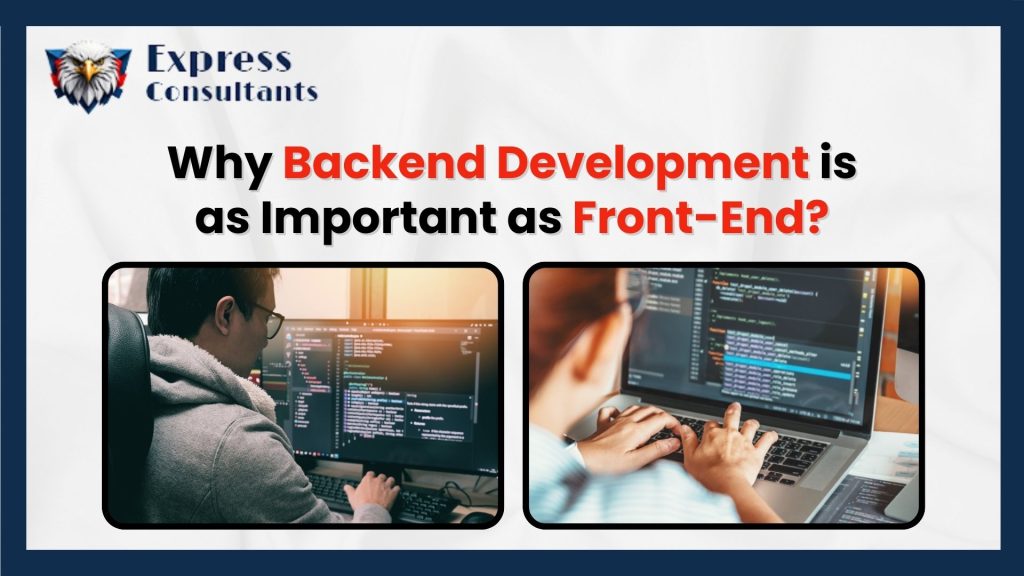
Why Backend Development is as Important as Front-End?
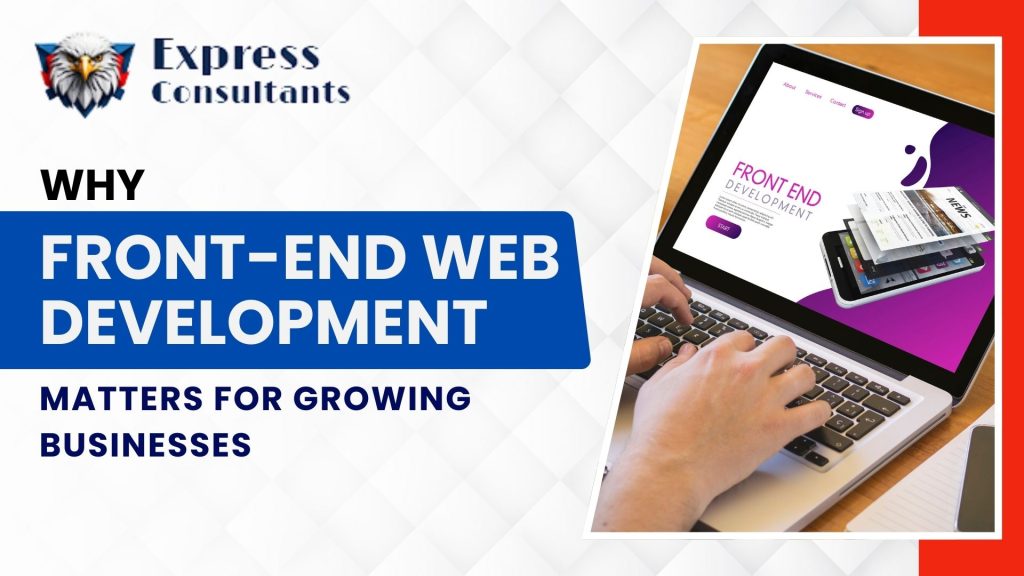
Why Front-End Web Development Matters for Growing Businesses

Why Outsource Mobile App Development ?

Why Having a Good Website Design is Important for Business Growth?
Why Having a Good Website Design is Important for Business Growth?

“Your website is the window to your business. Keep it fresh, keep it exciting.”
Imagine walking into a store where everything is cluttered, colors clash, and the layout makes it impossible to find what you’re looking for. You’d probably leave, right? The same goes for your website. In today’s digital age, where your online presence often serves as the first interaction between you and potential customers, a good website design is not just an option—it’s a necessity.
The Importance of Good Website Design for Business Growth
So, why is having a good website design so crucial for business growth? It’s simple: your website is the face of your business. It’s where customers form their first impressions, learn about your products or services, and decide whether or not they want to engage with your brand. A good website design can make all the difference in how your business is perceived and how effectively it can convert visitors into loyal customers.
Good website design plays a pivotal role in business growth by ensuring your site is easy to navigate, visually appealing, and aligned with your brand’s identity. When done right, it can enhance user experience, build trust, and ultimately drive sales. On the flip side, a poorly designed website can turn potential customers away faster than you can say “404 error.”
Why a Good Website Design Matters
First Impressions Last
When someone visits your website, the design is the first thing they notice. A sleek, modern, and professional design instantly conveys credibility. If your website looks outdated or is difficult to navigate, visitors might think your business is equally outdated. And let’s face it—nobody wants to do business with a company that feels stuck in the past.
Enhances User Experience
A well-designed website isn’t just about looking pretty. It’s also about functionality. Good website design ensures that your site is user-friendly, which means visitors can easily find what they’re looking for without getting frustrated. Intuitive navigation, clear calls-to-action, and a logical layout contribute to a seamless user experience that keeps visitors engaged.
Boosts SEO Performance
Search engines love good website design too. When your site is well-structured, loads quickly, and is mobile-friendly, search engines like Google take notice. This can significantly improve your SEO rankings, making it easier for potential customers to find you. Plus, when users spend more time on your site because it’s well-designed, it signals to search engines that your content is valuable, further boosting your rankings.
Builds Trust and Credibility
Trust is a major factor in any business relationship, and your website plays a key role in establishing it. A professionally designed website with clear, concise information and a secure connection (hello, HTTPS) builds trust with visitors. They’re more likely to believe that you’re a legitimate business that values its customers.
Increases Conversion Rates
At the end of the day, the goal of any business website is to convert visitors into customers. Good website design plays a direct role in this by guiding visitors towards taking action, whether that’s making a purchase, signing up for a newsletter, or contacting you for more information. Through strategic placement of buttons, forms, and other elements, a well-designed website can significantly increase conversion rates.
Supports Brand Consistency
Your website is an extension of your brand. Good website design ensures that all elements from colors and fonts to imagery and messaging are consistent with your brand’s identity. This consistency not only reinforces your brand but also helps to create a cohesive experience for visitors, making your business more memorable.
Advantages of Having a Good Website Design
Alright, let’s break it down a bit more, yeah? Having a good website design is like having a rock-solid foundation for your business’s online presence. Here’s why it’s such a big deal:
- User Retention: If your website is easy to use and visually appealing, people are more likely to stick around. It’s that simple. They’ll browse more, learn more, and eventually, buy more.
- Competitive Edge: A well-designed website sets you apart from the competition. It shows that you’re professional, up-to-date, and serious about your business. In crowded markets, this can be the difference between standing out and blending in.
- Improved ROI: Investing in good website design can lead to better returns. How? By attracting more visitors, keeping them engaged, and converting them into customers. Over time, this translates to increased sales and growth.
- Brand Perception: People judge a book by its cover, and the same goes for websites. A good design creates a positive perception of your brand, making people more likely to trust you and do business with you.
Mobile Responsiveness
One more thing to keep in mind—your website design needs to be mobile-friendly. More than half of all web traffic comes from mobile devices, so if your site doesn’t look good on a smartphone, you’re missing out on a massive chunk of potential customers. Mobile responsiveness isn’t just a nice-to-have feature; it’s essential for reaching and retaining customers in today’s market.
The Ripple Effect of Good Design
Think of good website design like the pebble that causes ripples in a pond. One small improvement can lead to a cascade of positive effects throughout your business. From increased customer satisfaction and loyalty to better search engine rankings and higher conversion rates, the benefits of investing in good website design are both immediate and long-lasting.
Final Thoughts It’s More Than Just Aesthetics
At the end of the day, having a good website design is about more than just looking good—it’s about creating a tool that supports your business’s growth and success. Your website is often the first interaction people have with your brand, so make it count. With a well-designed site, you can build trust, improve user experience, and ultimately drive more business your way.
Express Consultants is the best web development company. We provide end-to-end web development services, creating visually appealing and responsive websites that drive engagement and deliver results. Whether you’re looking to revamp an existing site or build one from scratch, our team has the expertise to help you achieve your goals.
FAQ
1. Why is website design so important for my business?
It’s often the first thing potential customers see, and you want to make a great first impression, right? A good website design ensures that your site looks professional, is easy to navigate, and aligns with your brand. This not only builds trust but also keeps visitors engaged, which is crucial for turning them into customers.
2. How does a good website design affect my business growth?
A well-designed website does a lot more than just look pretty. It improves user experience, boosts your SEO rankings, and helps increase conversion rates. All these factors contribute to growing your business by attracting more visitors, keeping them on your site longer, and encouraging them to take action whether that’s making a purchase, signing up for a newsletter, or getting in touch with you.
3. Can’t I just focus on the content and worry about the design later?
Content is definitely important, but design and content go hand in hand. Even the best content can be overlooked if your site is poorly designed. If your website looks outdated or is hard to navigate, visitors might not stick around long enough to read your content. A good design makes your content more accessible and engaging, which helps to keep visitors on your site longer.
4. How does website design impact SEO?
Search engines, like Google, pay attention to how well your website is designed. A good design means faster load times, mobile responsiveness, and a clean structure all things that search engines love. When your site ticks these boxes, it’s more likely to rank higher in search results, making it easier for potential customers to find you.
5. What are the key elements of good website design?
There are a few must-haves when it comes to good website design:
- User-Friendly Navigation: Visitors should be able to find what they’re looking for without getting lost.
- Responsive Design: Your site should look great on all devices—desktops, tablets, and smartphones.
- Fast Load Times: Nobody likes waiting for a site to load. Slow sites can turn visitors away.
- Clear Calls-to-Action: Guide your visitors to take the next step, whether it’s making a purchase or contacting you.
- Consistent Branding: Your design should reflect your brand’s identity, from colors and fonts to imagery and messaging.
6. How can good website design increase my conversion rates?
Good design leads visitors to take action. By strategically placing buttons, forms, and calls-to-action, you make it easier for visitors to do what you want them to do like buying a product or signing up for your newsletter. When your website is easy to navigate and visually appealing, visitors are more likely to trust your brand and take that next step.
7. Isn’t good website design expensive?
Sure, good design can be an investment, but think of it this way it’s an investment in your business’s growth. A well-designed website can attract more customers, improve your search engine rankings, and increase sales, all of which lead to a solid return on investment. Plus, with the right web development company (like Express Consultants), you can get a design that fits your budget and meets your needs.
8. Why should I choose ExpressConsultants for my website design?
At Express Consultants, we specialize in creating websites that are not only visually appealing but also highly functional. We understand that a good website design is key to business growth, which is why we focus on creating designs that enhance user experience, boost SEO, and drive conversions. Whether you need a brand-new site or a redesign, our team is here to help you achieve your goals and grow your business.

